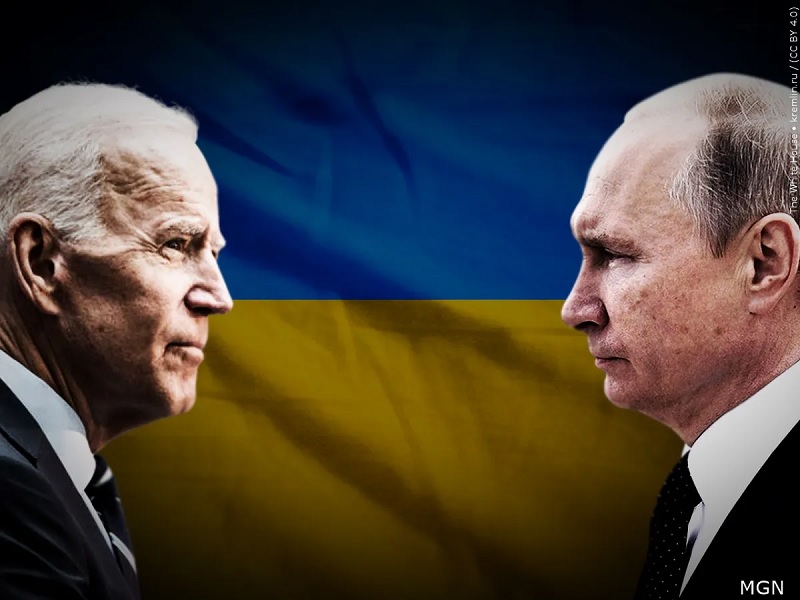That development will represent a game-changer in the Ukrainian Conflict since Moscow’s nuclear umbrella will naturally extend over its newly incorporated regions, which will in turn lead to several likely scenarios that are expected to unfold in the very near future.

The Donetsk, Kherson, Lugansk, and Zaporozhye regions that historically comprise most of the historical Russian region of Novorossiya are expected to formally reunify with their Motherland by the end of next week.
That development will represent a game-changer in the Ukrainian Conflictsince Moscow’s nuclear umbrella will naturally extend over its newly incorporated regions.
The US will then have to decide whether to accept President Putin’s olive branch of de-escalating the conflict by pragmatically recognizing that geopolitical reality (even if only unofficially just like it did after Crimea’s reunification) or escalating everything by ordering Kiev to reconquer its lost territory with the massive force that it’s reportedly assembling all along the 1,000-kilometer line of control (LOC).
The second scenario could result in Russia resorting to tactical nukes in self-defense as an absolute last resort to safeguard its territorial integrity in the face of a potentially overwhelming NATO-backed but Ukrainian-fronted conventional invasion force.
There are arguments for and against the US provoking Russia into doing so, but the purpose of the present piece is to briefly discuss how it could all play out.
President Putin is expected to recognize the newly reunified regions’ full administrative borders upon their incorporation into Russa just like he recognized the Donbass Republics’ full ones in late February.
This means that Moscow will officially regard some of its territory as occupied by NATO-backed but Ukrainian-fronted forces.
From there, he can either immediately transform the special operation into a defense of Russia’s borders by authorizing a “shock and awe” campaign to destroy the gathering invasion force, its command and control centers, and related infrastructure, or he can give Kiev (which by extension means NATO and thus actually the US) an ultimatum to peacefully withdraw by the end of the weekend or so.
The argument in favor of the first scenario is that President Putin said on 24 February when announcing the special operation that it was meant to prevent the larger inevitable conflict that NATO was planning to launch against Russia via Ukraine.
Considering that he also implied criticism of Stalin for not attacking Hitler first, his mindset might be that it’s best to not give his foes a few extra days to seize the initiative.
As for the second scenario, President Putin might want to give American decisionmakers an “off-ramp” if he felt that there’s a credible chance that they might order their Ukrainian proxies to withdraw from the occupied territories.
What he’d also gain from this ultimatum is reaffirming to the Global South (seeing as how he doesn’t care about Western perceptions anymore) that he truly wants peace.
The US, as explained earlier, can do either one of two things: de-escalate by de facto recognizing the new geopolitical reality or escalate by ordering Kiev to reconquer its lost territory with the overwhelming NATO-backed but Ukrainian-fronted conventional invasion force that it’s reportedly assembling all along the LOC.
Regarding the first, the US-led Western Mainstream Media (MSM) could present Biden as a “peacemaker” by misleadingly claiming that he “saved the world from a nuclear apocalypse”.
There’d also be less chance of the economy completely tanking ahead of the tense November midterms and thus further eroding his party’s chances of retaining control of Congress.
Another argument in favor of that scenario is that the US could then use the cause of “liberating Ukraine” and eventually “Balkanizing Russia” for further expanding its hegemonic influence over Europe for at least the next generation or two as the guiding vision of the New Cold War. In order to “save face” and “deter Putin”, he might also extend the US’ nuclear umbrella over rump Ukraine.
Concerning the second scenario, the most ideologically radical American decisionmakers might have dangerously calculated that it’s better to provoke Russia into using tactical nukes in self-defense as an absolute last resort in order to catalyze the chain reaction of socio-economic and political consequences that would cripple Europe and thus forever entrench their declining unipolar hegemon’s influence there.
Moreover, the US could be wagering that getting President Putin to cross the Rubicon would put maximum pressure on the Global South to jump on their anti-Russian sanctions bandwagon and thus contribute to that newly restored world power’s “isolation”.
The presumable basis for this campaign would be that his country is supposedly too “dangerous”, “destabilizing”, and “rogue” to associate with.
With all this in mind, the following sequence of events can more or less be taken for granted:
1. Russia will formally incorporate those four former Ukrainian regions by the end of next week;
2. Their full administrative borders, not just the LOC, will be recognized per the Donbass precedent;
3. Moscow’s nuclear umbrella will be extended over their land and people in accordance with doctrine;
4. And the Kremlin will then accuse Kiev of partially occupying some of Russia’s territory.
From here, President Putin will have two choices:
5A. Authorize a “shock and awe” campaign for immediately removing the foreign occupiers;
Or
5B: Give the foreign occupiers an ultimatum for withdrawing by the weekend or so.
Regardless of whatever the Russian leader does, the US can only realistically do one of two things:
6A. De facto acknowledge this new geopolitical reality by ordering Kiev to withdraw;
Or
6B. Provoke Russia into using tactical nukes by ordering Kiev to launch a last-ditch massive invasion.
Everything will be clearer by early October, when a follow-up analysis and scenario forecast is planned.
By Andrew Korybko
Published by One World Press
Republished by The 21st Century
The views expressed in this article are solely those of the author and do not necessarily reflect the opinions of 21cir.com
